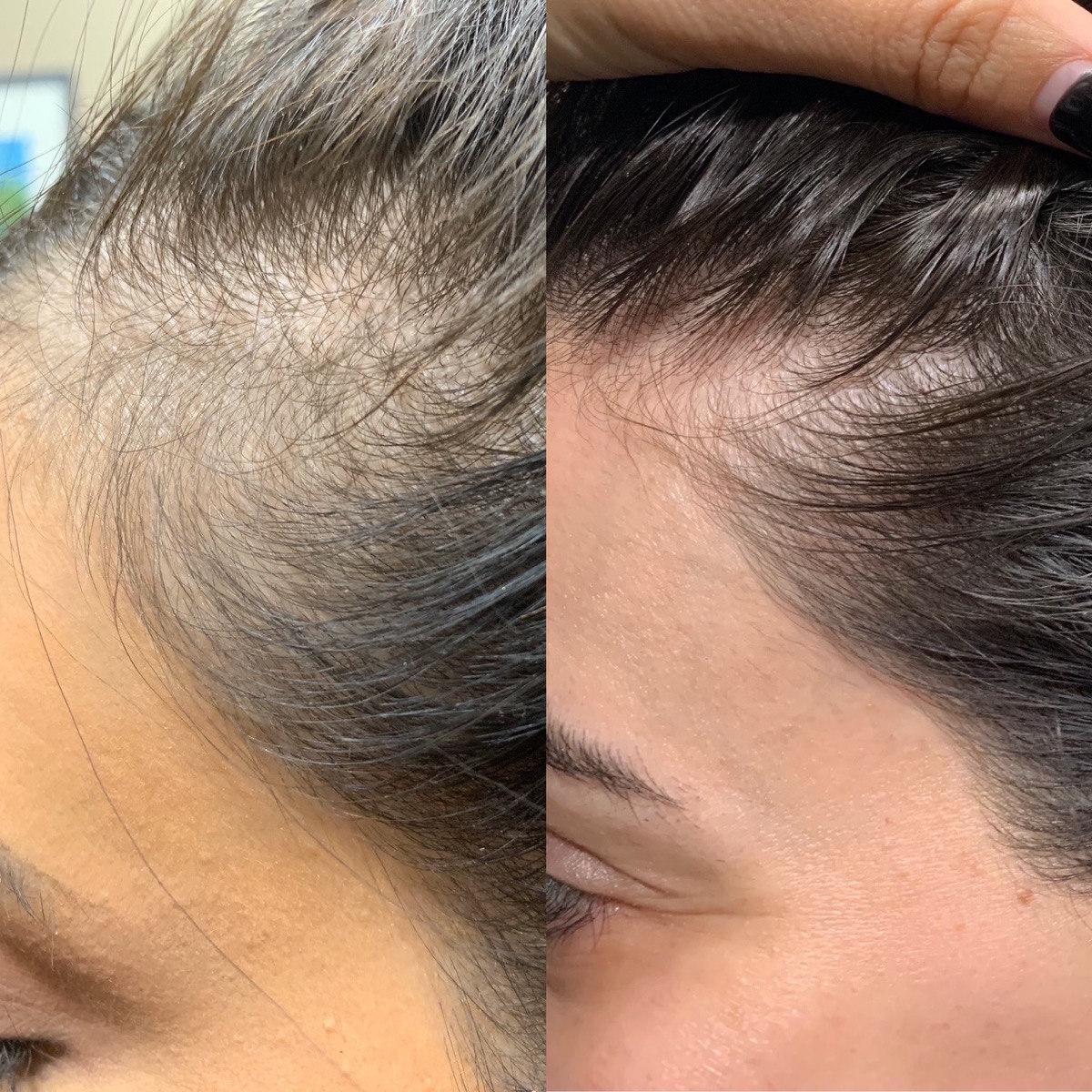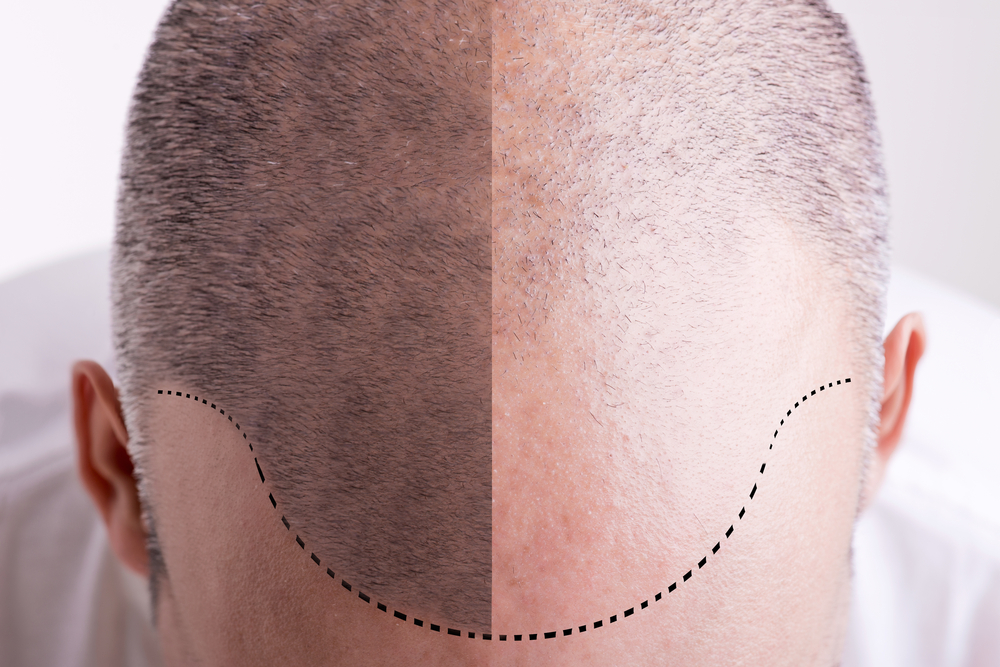Table Of Content

PRP doesn’t deliver results immediately, so you shouldn’t expect to see a full head of hair overnight. You’ll likely need three monthly sessions followed by an appointment four to six months later, and then yearly maintenance sessions after that, Khetarpal says. The exact schedule of your treatment plan will depend on a few factors, including the amount of hair loss you’re dealing with, as well as your age, hormones, and genetic makeup, according to the Cleveland Clinic. You’ll likely start seeing regrowth before your third and fourth appointment, Khetarpal says. Platelet rich plasm (PRP) is produced by taking the your own blood and placing it in a centrifuge to concentrate the platelets. This concentration of platelets (or “PRP”) is then injected into the area to be treated.
How much does PRP for hair loss cost?
Does platelet-rich plasma therapy, popular for hair growth, help with hearing loss? Experts weigh in - The Indian Express
Does platelet-rich plasma therapy, popular for hair growth, help with hearing loss? Experts weigh in.
Posted: Sat, 23 Sep 2023 07:00:00 GMT [source]
With PRP hair treatments, those platelets are drawn out and then injected into the scalp in hopes of promoting hair growth. As with most procedures, there is a careful process involved in using PRP for hair regrowth, beginning with a standard blood draw from the patient's arm. Growth factors, in a sense, play the role of messengers, signaling skin cells to function.
Other conditions that cause hair loss
And there are seemingly hundreds of different hair loss treatments with varying levels of reliability and success. Several studies resulted in hair thickening after PRP injections, so it’s safe to say yes, PRP does thicken hair. This thickening is due to hair follicle cells getting more nutrients following a PRP injection and the promoted growth. The authors of an additional review of clinical studies, which the International Journal of Women’s Dermatology published, considered PRP to be a “promising” treatment for hair loss, based on their findings. In a 2014 study of 20 people, PRP treatment increased hair density and peaked at 3 months.
Understanding hair loss treatments has never been so easy.
The cost of PRP is quite variable and can be as little as $400 or as much as $1,500 or more per session. Comparing costs is difficult, as the equipment used and any additives have a significant impact on the cost to the provider. The skill and experience of the provider are also critical to success. Do not look for the cheapest or the most expensive office, but rather investigate experience and reputation above all. Hair loss can affect your self-confidence, especially when it comes to relationships.
Platelet Rich Plasma and Its Use in Hair Regrowth: A Review
Potential side effects are pain, infection, soft tissue injury, bruising and bleeding. Based on the decades-old practice of using your own blood’s natural ability to heal your body, PRP therapy involves having your own platelets injected into balding patches on your scalp. The platelets get to work on damaged follicles, stimulating growth and thickening the platelets themselves. When considering platelet rich plasma therapy, choose a surgeon with significant experience performing the procedure.

It’s usually genetic, but it can also be triggered by diseases or disorders that attack the hair follicles. For example, sometimes a topical numbing lidocaine solution is applied to your scalp before injection. You may have to arrive early to a treatment session if this is the case.
Is PRP permanent for hair loss?
Most people need several sessions of PRP to see results and require ongoing maintenance sessions every six to 12 months. PRP therapy is usually not covered by insurance, so you may need to pay out-of-pocket. Platelets are a component of blood, along with red and white blood cells. When a person sustains a cut or wound, the platelets are some of the body’s “first responders” that arrive to stop the bleeding and promote healing.
What makes you a good candidate for PRP therapy?
The researchers concluded that PRP is a safe and effective method for promoting hair regrowth. Researchers have found evidence that PRP can lead to renewed hair growth. However, due to the limitations of these studies — such as small sample sizes — and the variation in technique and protocol among doctors, further research is necessary to confirm whether PRP is effective.
It’s another expensive treatment that isn’t generally covered by insurance, but it tends to be a long-lasting solution. Here, dermatologists share what you need to know about alopecia, including possible causes, treatment options and what you can do to prevent more hair loss. Because PRP injections are intended to promote healing or growth, you may not notice an immediate difference after receiving the injections. However, in several weeks or months, the area may begin healing faster or growing more hair than you would have expected if you hadn’t received PRP injections. Platelet rich plasma (PRP) is a substance that’s thought to promote healing when injected.
Especially in the last decade, there has been an increase in the variety of treatments for hair loss. Results vary from person to person, but some may see results after as few as three PRP sessions, while others may require more sessions before noticing results. Factors such as age, overall health, and the underlying cause of hair loss can influence the timeline for regrowth. While individual responses may vary, and optimal results often require multiple sessions.
If you are considering PRP injections, be sure to talk with your health care provider about all the benefits and risks. Talk to your provider before starting PRP therapy to discuss the total cost of treatment and ask about any potential financing options or payment plans they may offer. However, the team noted that because various researchers and clinics use different preparations, session intervals, and injection techniques to administer PRP, its effects can vary. They acknowledged, however, that the treatment is controversial, noting that small sample sizes and low quality of research were among the limiting factors of their investigation.
Generally speaking, the sooner you start treatment, the more options you have and the better your results, dermatologists say. Several serious diseases also attack the hair follicle, says Robert Brodell, a dermatologist at the University of Mississippi Medical Center. While alopecia doesn’t typically affect your physical health, the emotional and psychological distress it can cause are very real.
Their effectiveness largely depends upon what type of alopecia you have and how quickly you start treatment. PRP is a promising therapy for those who experience tissue damage or hair loss, but there is still some controversy surrounding this type of treatment. Continual research is actively exploring potential advancements in PRP treatments for hair loss.
Platelet-Rich Plasma for Hair Regrowth Requires Art and Science - Medscape
Platelet-Rich Plasma for Hair Regrowth Requires Art and Science.
Posted: Sat, 26 Mar 2022 07:00:00 GMT [source]
The beneficial effects of PRP therapy for hair regrowth may vary for each person. In a 2015 study of 20 people, researchers found that only 4 participants reported hair loss 12 months after their last treatment. According to a 2022 review, there isn’t a consensus on the frequency and duration of PRP therapy for hair loss. For example, the studies in the review found benefits for hair growth with PRP treatment ranging from 4 injections every 15 days for 3 months to 3 monthly injections for 6 months. A large body of research has shown that these over-the-counter creams and foams, applied to the scalp daily, are effective at stimulating hair growth, increasing hair density and halting hair loss over time.
A meta-analysis published in September 2017 in the Journal of Cosmetic Dermatology also explored the effect PRP could have on increasing hair number and thickness based on current studies. The researchers found there might be a correlation, but said it was too soon to say because the studies were small and the results weren’t significant. Initially used to heal joints, PRP has been gaining traction over the past few years as an innovative way to encourage hair growth. Different medical facilities use slightly different techniques for PRP therapy. For instance, some providers might suggest getting PRP injections more often than others.
Doctors then inject the plasma, which helps repair blood vessels, promote cell growth and wound healing, and stimulate collagen production. PRP may help promote increased blood flow to sites and blood vessel development. It can also help hair follicle turnover, reverse hair follicle miniaturization, and may help stimulate follicular stem cells, all of which lead to improvement of hair growth.













